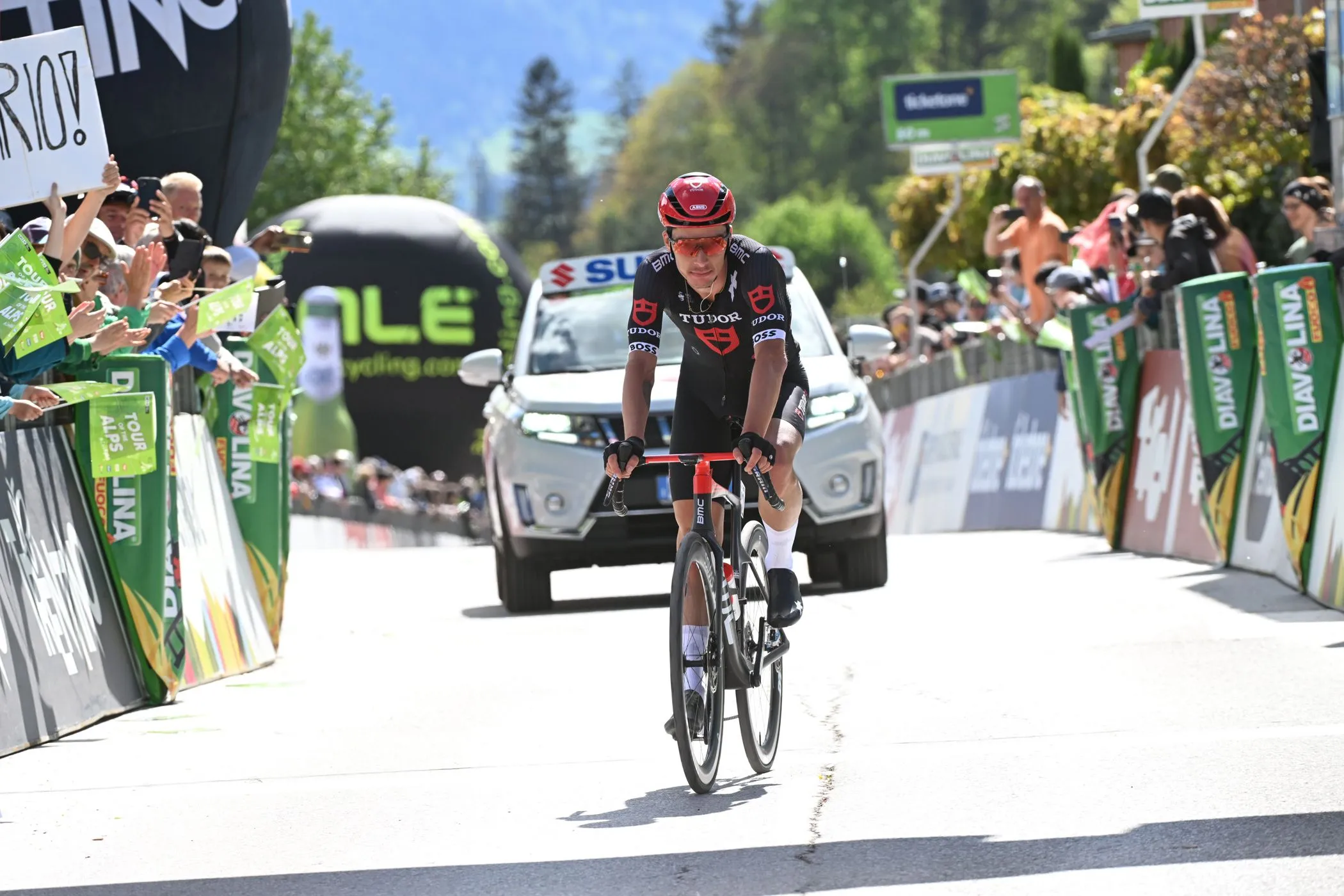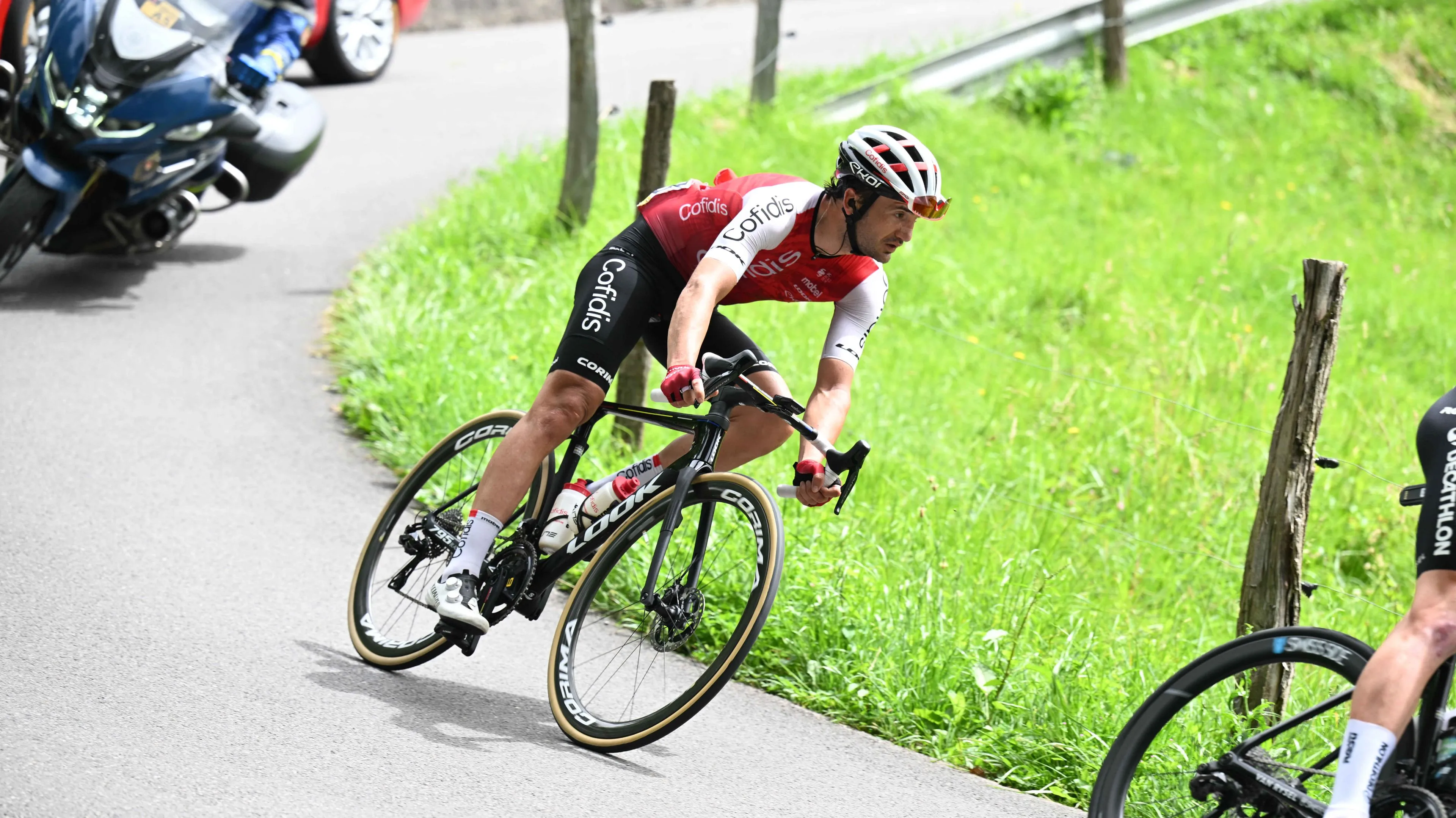What's happening in Colombia? Why there is fear of tough times ahead for Colombian cycling
CyclingSunday, 01 December 2024 at 08:57
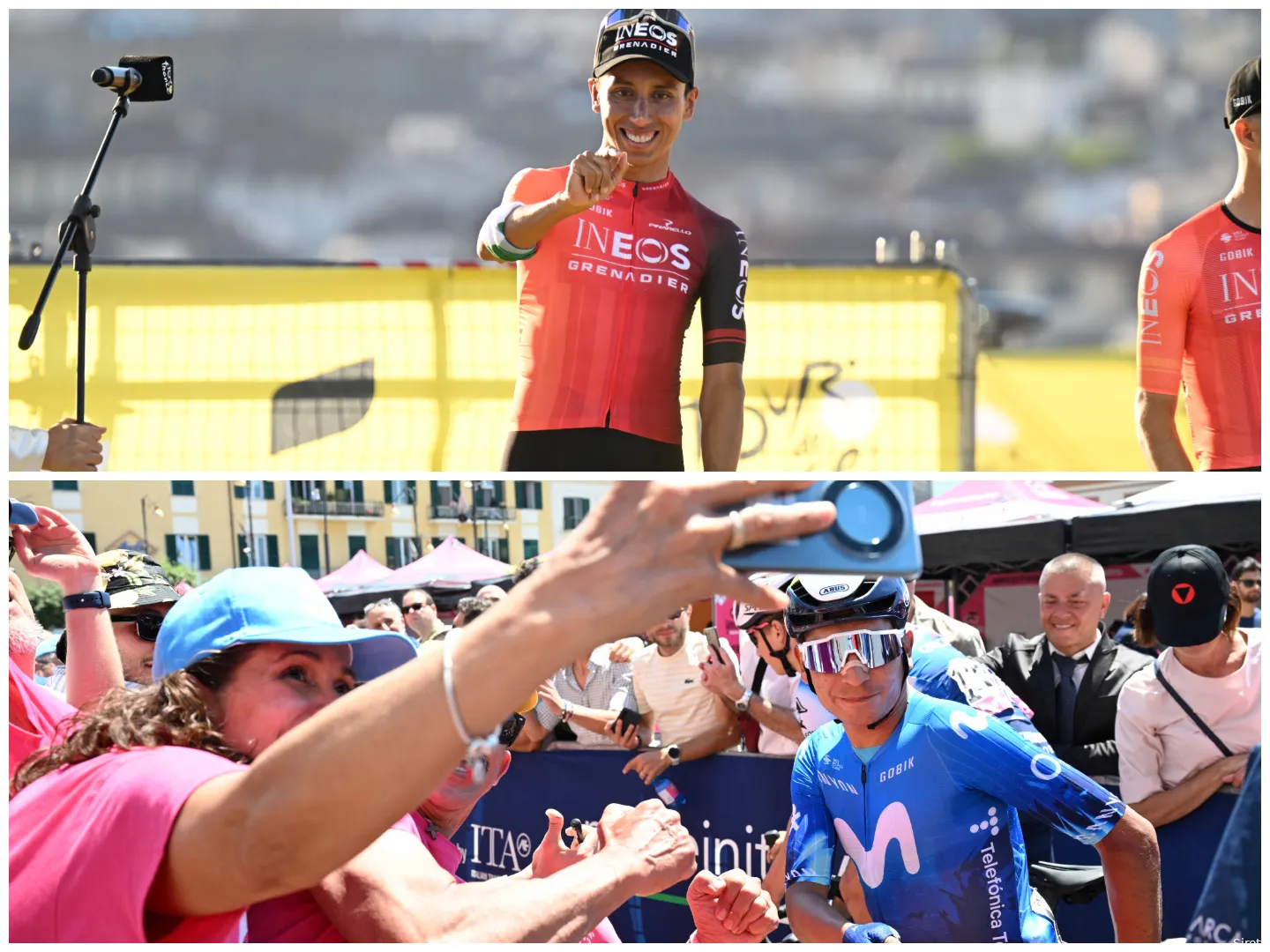
With Nairo Quintana and Egan Bernal, Colombia suddenly had two superstars in cycling overnight. Cycling madness was elevated to a new level. Besides the two grand tour winners, plenty of other compatriots showed themselves at the highest level. However, this period of pure bliss is now over. Is it a short-term dip, or is there more behind it?
It had been a desire of the Colombian people for decades: to win a grand tour, preferably the Tour de France. Of course, the country already had some big names, such as Fabio Parra, Santiago Botero, and Luis "Lucho" Herrera. The latter won the Vuelta a España in 1987, making him the only Colombian to win a grand tour. Following his legendary achievement, things remained quiet in the South American country for a long time. People yearned for a successor to The Little Gardener, but it took a long time.
When Nairo Quintana appeared on the scene, it was soon apparent that this was a special rider. In his first professional year, he was immediately invaluable to Alejandro Valverde in the Vuelta. Less than two years later, it was already a hit for Nairoman. He won the Giro d'Italia in front of runner-up Rigoberto Urán: a one-two punch for Colombia. It was a celebration, and Quintana was the country's hero. In 2016, he won his second grand tour with the Vuelta. He often came close in the Tour de France but had to give way to Chris Froome each time.
Quintana was the spark, Bernal the fire in Colombian hearts
Partly thanks to the inspired climber, Colombia had a cycling renaissance. Miguel Ángel López was on the podium of the Giro and Vuelta, as was Esteban Chaves. The latter became the first Colombian to win a monument with his victory in Il Lombardia. Fernando Gaviria was if only for a moment, one of the peloton's most feared sprinters: he won two Tour stages and wore the yellow jersey on his first appearance in France. But carrying the yellow jersey to Paris didn't work out until a young INEOS climber showed his face.
The name was Egan Bernal. As a U23 rider, he won the Tour de l'Avenir and made his mark on the pro-continental circuit. He went straight to the Tour in his first year with his British team, but things suddenly kicked off the following year. Bernal, only 22, rode with the best and delivered a rock-solid final week. The desired Tour victory was finally there for Colombia. Two years later, he was back on the top spot, this time in the Giro. Thus, after a 30-year of waiting, Colombia suddenly had four victories in grand tours in seven years.
Read more below the photo!
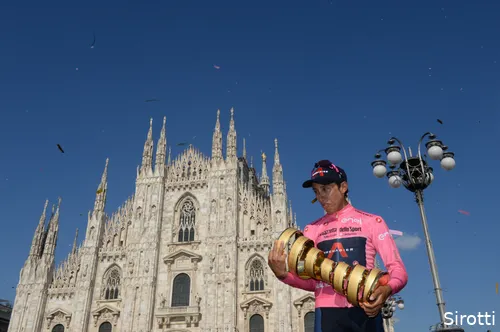
Bernal won his second grand tour with the Giro in 2021.
Doping, accidents and inconsistency: it's going downhill
After the Golden Age, there now seems to be a darker period in Colombian cycling. Quintana argued with his team Movistar and left. At Arkéa-Samsic, he got suspended after using the banned drug tramadol. Once back at Movistar, the now 34-year-old Quintana is just a shadow of his old self. Bernal struggled with his form and was involved in a horrific accident during training in 2022. Eleven broken ribs, perforated lungs, and 20 fractures in the kneecap, thumb, hand, femur, and vertebrae startled the cycling world. The fear was that he would never cycle again, but by August of the same year, he was already back on the bike.
But even Bernal has yet to find his legs of the past. With Daniel Felipe Martínez, there was another Colombian on the podium of the Giro this year, but otherwise, he was invisible. And for other aspiring top riders, such as Santiago Buitrago, the main thing is that they lack the consistency to connect with the best. And López, once seen as the successor to Quintana, became involved in a doping case he is still not out of. But beyond the deteriorating performance, a very dark cloud hangs over Colombian cycling.
Read more below the photo!
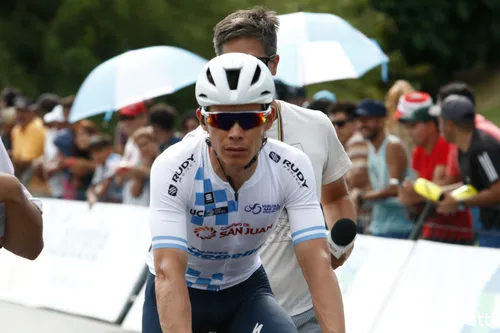
Once the great hope, now dismissed Miguel Ángel López has taken a free fall.
Disappearance of Tour of Colombia harbinger of doom?
The Colombian government is interfering—the young Colombians who want to reach the top lag behind their European competitors. Professionalization is also not at the right level anymore. And who else but Quintana put himself forward as the guardian angel of the youngsters. "With so many problems in our country, I want to invite you to support us now," he told the parliament of Colombia. "We see big cuts for athletes and the Ministry of Sports. But nobody seems to notice; nobody knows anything or talks about it. Historically, in Colombia, we have always opposed difficulties, and we still do - not only on the bike to get results and represent our country, but also by advocating for our young people."
The call seems to have backfired because the government wants to encourage the development of cycling but at the expense of the Tour of Colombia. For years, it has been a monumental event in the country, where the riders are welcomed as heroes. But the money that usually goes to the round is now being taken away "to continue to promote the development of new talents and encourage the growth of the sport in all areas,"
told the cycling federation. That seems to be an evasive answer, as the organization tells us, "Throughout the year, there was no money. The situation in the country is not optimal."
Read more below the Tweet!
No race, no development: Colombia must find its way back
So Colombians are not falling for the cycling federation's story. Every cycling fan knows how important big races are for developing talent. Every pro has a story of their first visit to a race. To see your heroes in person and watch the whole circus in full swing is inspirational. With the disappearance of the much-loved Tour of Colombia, young Colombians now have to settle for television footage. And that's not exactly the same as having your picture taken with your idol.
At the moment, there is no obvious successor to Bernal and Quintana among the U23 riders. The 2019 Tour winner is still the last Colombian on the Tour de l'Avenir podium. Therefore, monitoring developments in South American countries will be interesting. The known riders are getting a bit old, and the young guard is not ready to follow in their footsteps. With the sport under government pressure, riders are already sounding the alarm: the next generation has no chance without money, especially in today's cycling conditions.
Read also
IDL-productions
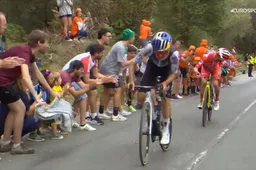
How will INEOS have viewed Tom Pidcock’s brave move, as he rewarded both Q36.5 and himself with success?
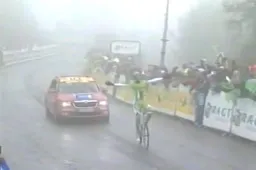
In his prime, Alessandro De Marchi would have been a perfect fit for attacking UAE and Pogacar
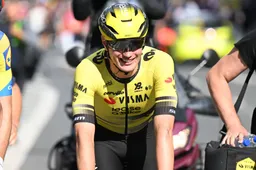
Decathlon goes all-in on Dutch sprint train: "They started producing specifically for me"
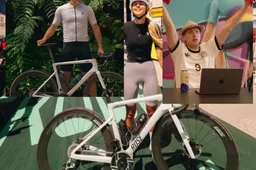
DACH, Kittel, a famous triathlete and now Tietema: what you need to know about the Rockets’ new sponsor
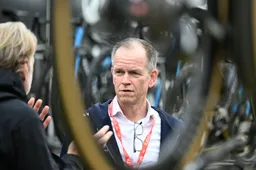
Richard Plugge slams new 2026 Tour de France experiment: "I’m not a fan of that idea"
Latest Cycling News

How will INEOS have viewed Tom Pidcock’s brave move, as he rewarded both Q36.5 and himself with success?
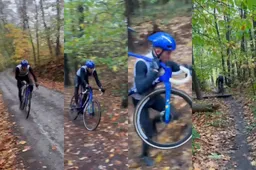
🎥 Sit back and turn up the volume! Thibau Nys looks just about ready for cyclo-cross, as these awesome clips show
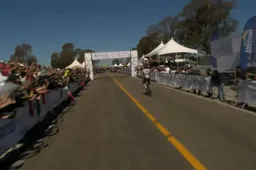
🎥 Rarely seen: Isaac Del Toro cheers on his girlfriend, hands out hundreds of high-fives, and secures another champion’s jersey

📷 Mathieu van der Poel keeps pushing: heart rate and pace rise during pre-breakfast run
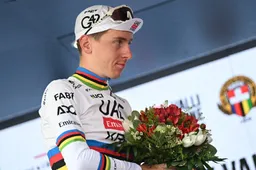
Pogacar can start the Vuelta right at his doorstep, but will the time trial through F1 streets tempt the World Champion to participate?
Popular Cycling News
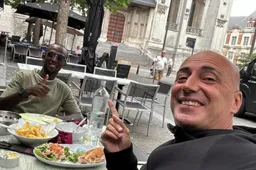
"Having 50 or 51 million in the bank changes nothing": Pogacar and Girmay’s manager reveals how his riders stay happy
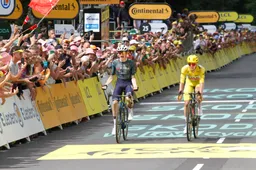
After a failed Tour mission filled with Pogacar's demons, organizers now hope for mercy, and for Evenepoel and Vingegaard to join the party
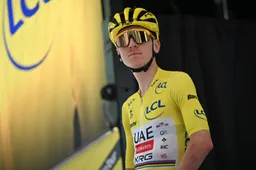
Armstrong and Bruyneel predict when Pogacar will call it quits: "By then, he’ll have won everything there is to win"

Richard Plugge slams new 2026 Tour de France experiment: "I’m not a fan of that idea"
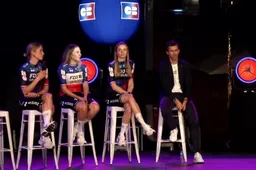
Team boss Vollering sounds the alarm: fewer riders and races for FDJ-Suez in 2026
Latest Comments
- Now the Palestinian protestors can stop their whining. Trump came to the rescue. So they can now STFU and go back to waving the rainbow flags.raufus15-10-2025
- Cracked the code lol. If it was that easy to 'crack the code' jonny Vegas would be charging up the Kwaremont giving Pog a dose of his medicine. Evenepoel can't match pog on a climb and neither can mvdp. Anything with a half difficult climb and Pog smashes the field. Even on flat(ish)parcours like Roubaix it came down to a mistake and crash by pog to definitively crown mvdp. MSR is the only one that Pog probably won't win.kevpt10-10-2025
- We've seen this movie before. I think Pogacar is doping.DeadBlow10-10-2025
- 👍Bea08-10-2025
- 👌🏻Bea08-10-2025
- What the data doesn't show is how much of an effect drafting had for evenepoel. Pogacar went with del toro at 100km whilst Evenepoel was still in the bunch. Despite the bike changes he still had a lot of assistance getting back to the bunch. Pogacar then rode 60km solo whilst evenepoel rode with Healy/Skjelmose until going solo in thd last 10-15km. Thats ~20% less power / energy requirements for 45-50km. Apples and oranges...kevpt30-09-2025
- 👏👏Bea24-09-2025
- Agreed! As we all know now, Juan Ayuso will be on another team. But it was sweet to see him win the stages at La Vuelta. I do love the drama of cycling admittedly but its clear to see the talent of winners of stages in a Grand Tourryhw2814fq921-09-2025
- Pogacar has no competition he has won everything, I cant imagine even being him in that position!! Crazy. I am sure he has some back up plan for how he wants to spend his retirement years at age 30 onward. Does he like beer? Plenty of innovation in brewing. And you don't have to be super social. Chapeau/Cheers whatever you like Tadej you will do.ryhw2814fq921-09-2025
- Plus its confirmed that the Philadelphia Cycling Classic up the Manayunk Wall is back for 2026! hooray for thatryhw2814fq918-09-2025
Loading

